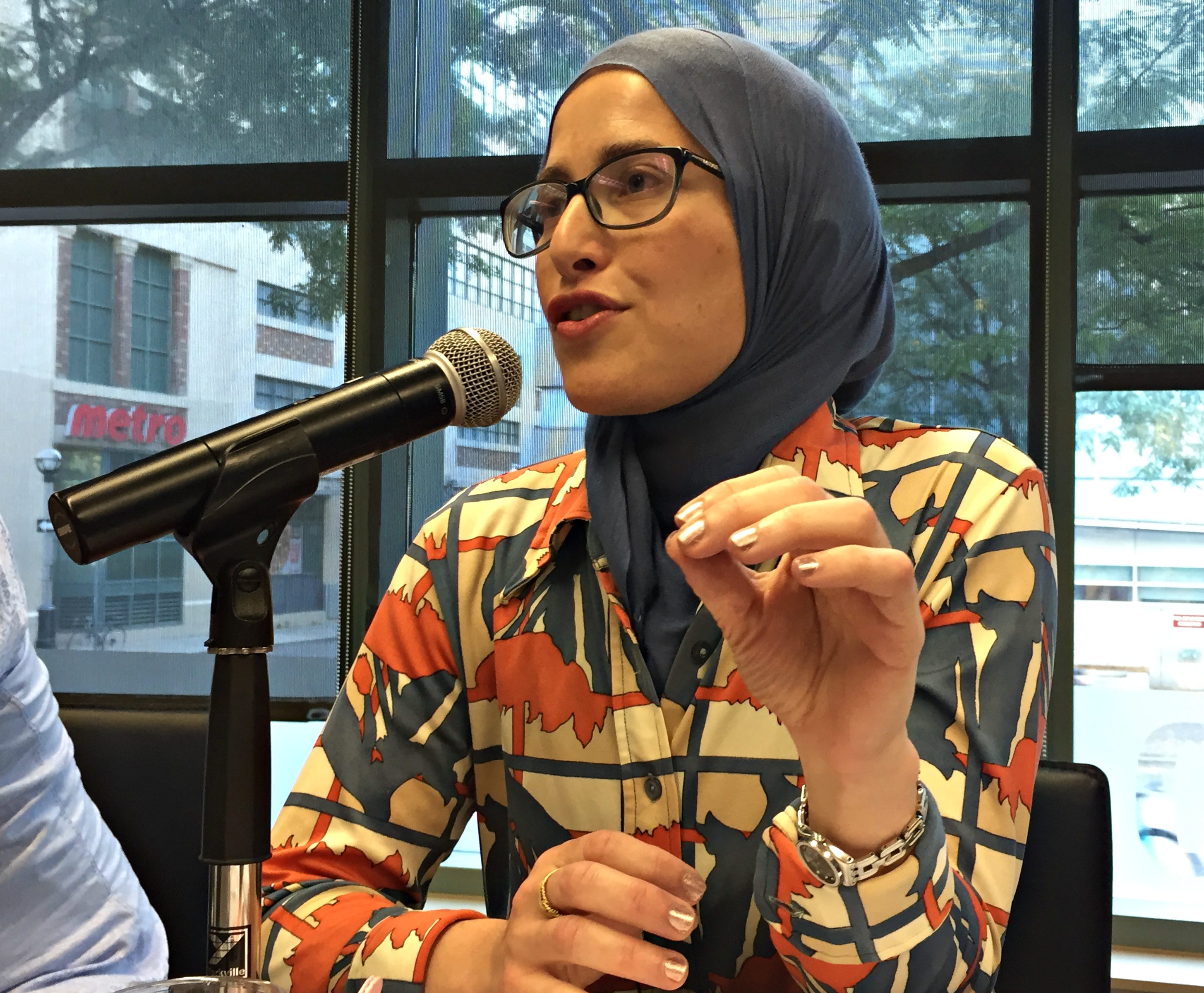By AMANDA POPE
Staff reporter

Mainstream newsrooms need to diversify coverage produced by “male and pale” newsrooms by giving activists the opportunity to write columns and air their opinions, Ryerson University journalism students were told during a recent panel discussion.
The Ryerson Journalism Research Centre hosted the panel, “Activist, advocate, reporter, columnist: Where’s the line?” as a follow-up to controversy earlier this year over the extent to which writers for a news organization should become participants in news stories. Desmond Cole, who wrote a freelance column for the Toronto Star, disrupted a Police Services Board meeting in April to protest the board’s refusal to destroy information officers had gathered through the now-discredited ‘carding’ policy. An editor subsequently informed Cole of the newspaper’s rules prohibiting journalists from becoming activists. Editors at The Toronto Star said they wanted Cole to continue with his twice-monthly column, but he resigned.
Panelist Amira Elghawaby, the communications director at the National Council of Canadian Muslims, said questions about the role of advocacy in journalism seem to arise more frequently when it comes to marginalized voices: “Why is it that if I am of a different faith, or a different skin colour, or of a different gender, or of a different sexual orientation – why am I worried about my bias but the male and pale newsrooms have not ever been worried about their bias?”
The Star, she said, “lost a huge audience; this was their opportunity. You want to have incredible voices who are reflecting what is happening on the ground and are doing so in their voices.”
Elghawaby said that when she was working as a journalist she worried that she would no longer be viewed as “neutral’ when she decided to start wearing a headscarf.
“I was afraid because I said to myself … ‘I look like I have a bias.’ But I don’t think everyone thinks about themselves in that way.”
Vicky Mochama, a columnist for Metro News Canada and the Toronto Star, told the audience of more than 100 journalism students that while mainstream news organizations are doing more to include the voices of people from marginalized communities, most are still not willing to give them full-time jobs.
“There are different sets of standards for white journalists than there are for journalists of colour or journalists who advocate for people of colour,” she said, noting that Cole was never hired as a full-time employee at The Toronto Star. “These are institutions that are happy to trade on the work of people of colour without ever substantially supporting people of colour and the communities that they come from … which is to say, ‘We want to hear from you but we don’t want you in the building.’”
Mochama, who is a freelancer, said her identity as a person of colour and her experiences inevitably influence how she does her job: “It informs what sort of sources I talk to because that’s the community that I’m most intimately involved with,” she said. “It informs how I think about word choices around blackness or around being a woman in a way that someone who is in my exact same position who is not a black woman would not have those things in mind.”
Nick Taylor-Vaisey, a digital journalist at Maclean’s Magazine and president of the Canadian Association of Journalists, said content must be clearly labelled so audience members understand whether they are reading an opinion column or a news story. And Elghawaby pointed out that news organizations themselves are fueling confusion by not sending reporters to cover events and instead sending columnists who produce opinion pieces that are not clearly labelled.
Mochama said she makes clear distinction between her work as a columnist and work she does as a reporter: “If there’s a thing that comes out for me that’s a piece of reporting, you’ll never see a follow-up column about the same thing,” she said. “There are boundaries that I like to maintain.”
Jorge Barrera, an investigative reporter for the Aboriginal Peoples Television Network, warned that journalists focused on their own strong viewpoints risk missing important stories.
“My first gig was in Yellowknife and at that time … it was the beginning of a push on land claims,” he said. “In covering the North I realized that all of the assumptions that I had picked up – especially when it came to left-leaning theory – all were blown out.”
Barrera said he arrived in the North with preconceived ideas about the evils of the mining industry and the role of unions. Once he was on the job, he said, those ideas were challenged when he realized many people in Indigenous communities saw mining operations as a pathway to greater prosperity and witnessed unions opposing hiring quotas for Indigenous workers.
“If I were to have approached it from an ideological position from the left,” Barrera said, “I would have missed out on all these stories, I wouldn’t have seen it or have been able to understand what was going on.”
